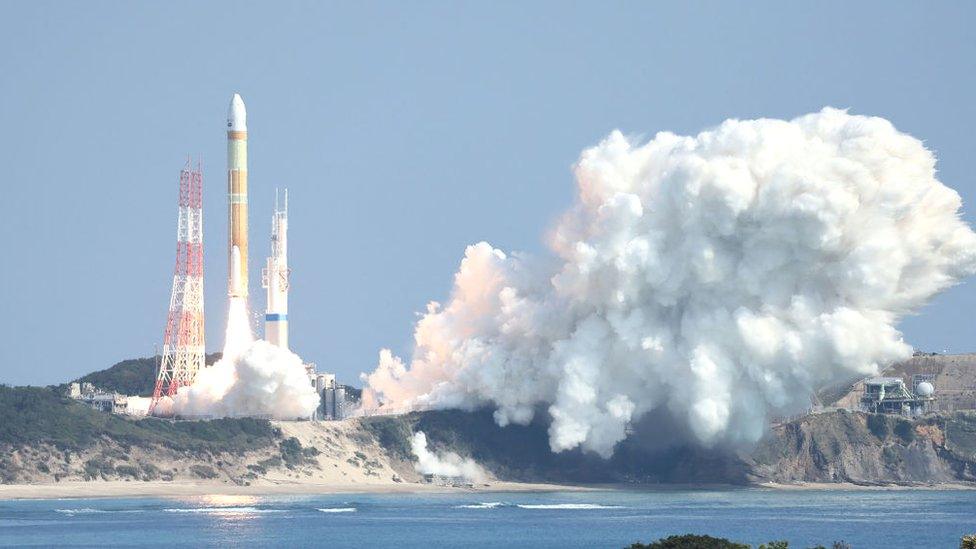Japan joins Moon race with successful rocket launch
- Published
Watch: Japan's H-IIA rocket carrying a Moon lander launched from the Tanegashima Space Center
Japan on Thursday successfully launched a rocket with a lunar lander at its fourth try this year, after previous attempts were foiled by bad weather.
The lander, dubbed the "moon sniper", is expected to attempt a Moon landing in February if all goes well.
Japan has twice failed to reach the lunar surface in the past year, amid setbacks for its space programme.
It is bidding to become only the fifth country to land on the Moon, after the US, Russia, China and India.
Two weeks ago, India made history when it successfully landed a spacecraft near the south pole of the Moon.
The Japanese spacecraft is projected to land within 100m (328ft) of a location near the Shioli crater, on the near side of the Moon.
It is expected to enter the Moon's orbit within four months. It will then spend a month circling the Moon before attempting a landing in February.
The $100m (£59m) mission is meant to demonstrate Tokyo's ability to land a lightweight, low-cost spacecraft on the Moon.
The rocket was also carrying the X-Ray Imaging and Spectroscopy Mission (XRISM) satellite, a joint project between the Japanese, American and European space agencies.
The satellite, containing a telescope the size of a bus, has parted ways with the lunar lander to orbit around the Earth. It will now begin studying space phenomena such as black holes.
The successful launch follows a series of failures over the past year.
Last November, JAXA lost contact with its OMOTENASHI spacecraft and aborted the Moon landing mission.
More recently in April, a private Japanese start-up, iSpace, failed to land its Hakuto-R lander after it too lost contact with the spacecraft.
Two test rocket launches have alsofailed this year, the latest in July when engine failure caused an explosion.
Watch: Rocket explodes during test in Japan
Related topics
- Published26 April 2023

- Published7 March 2023
